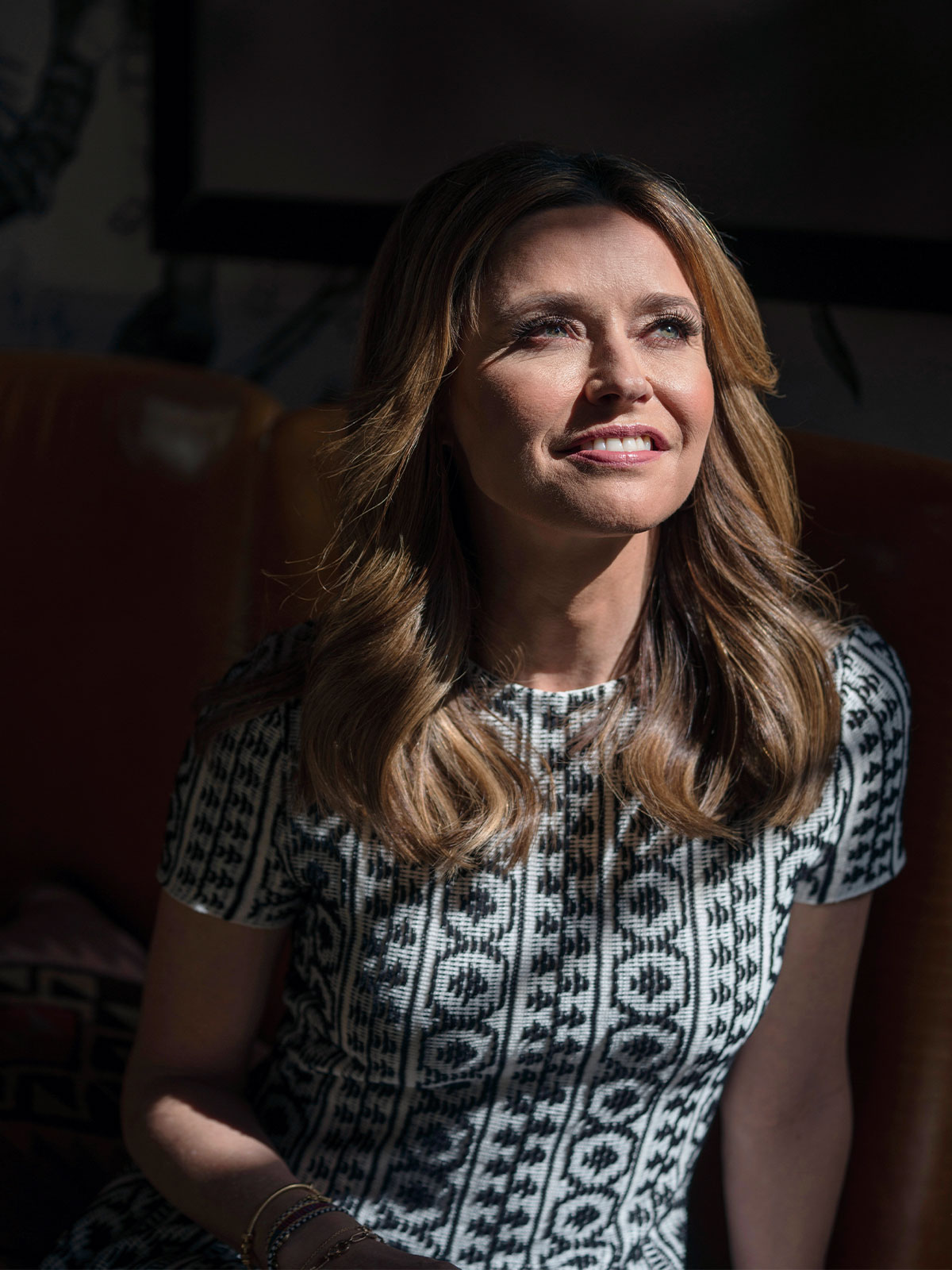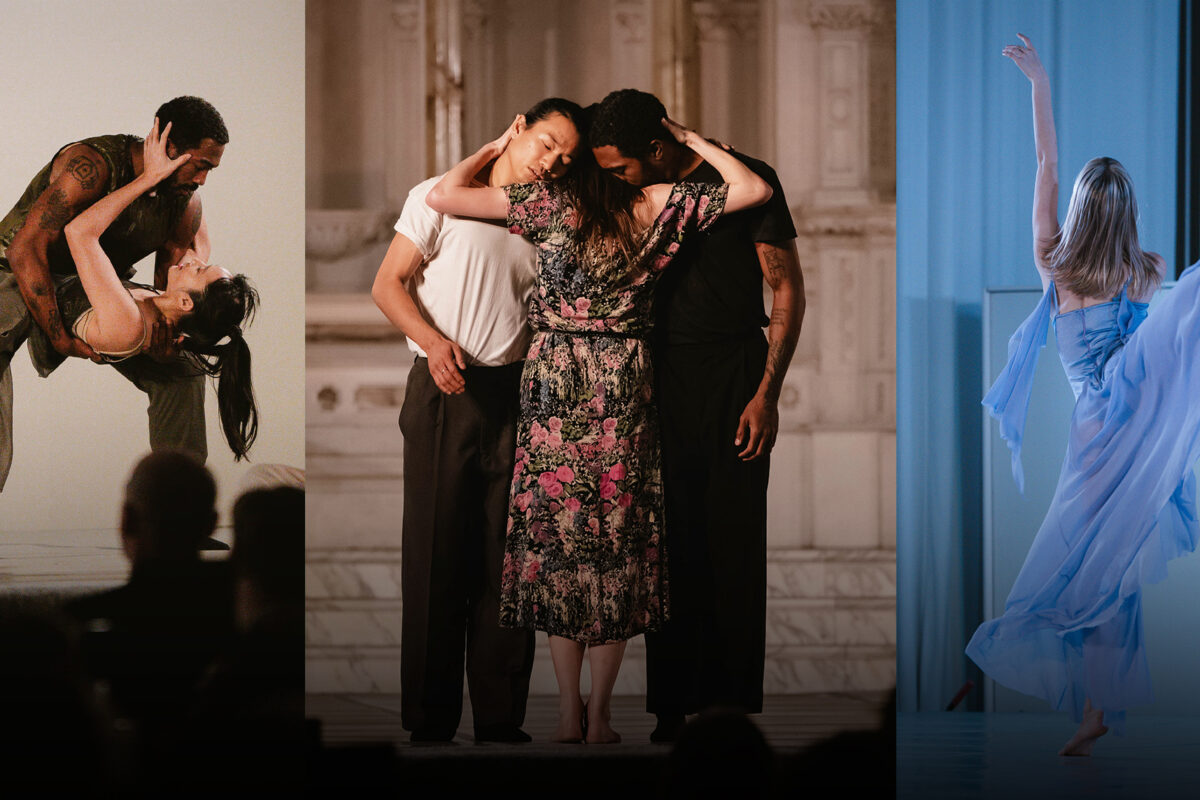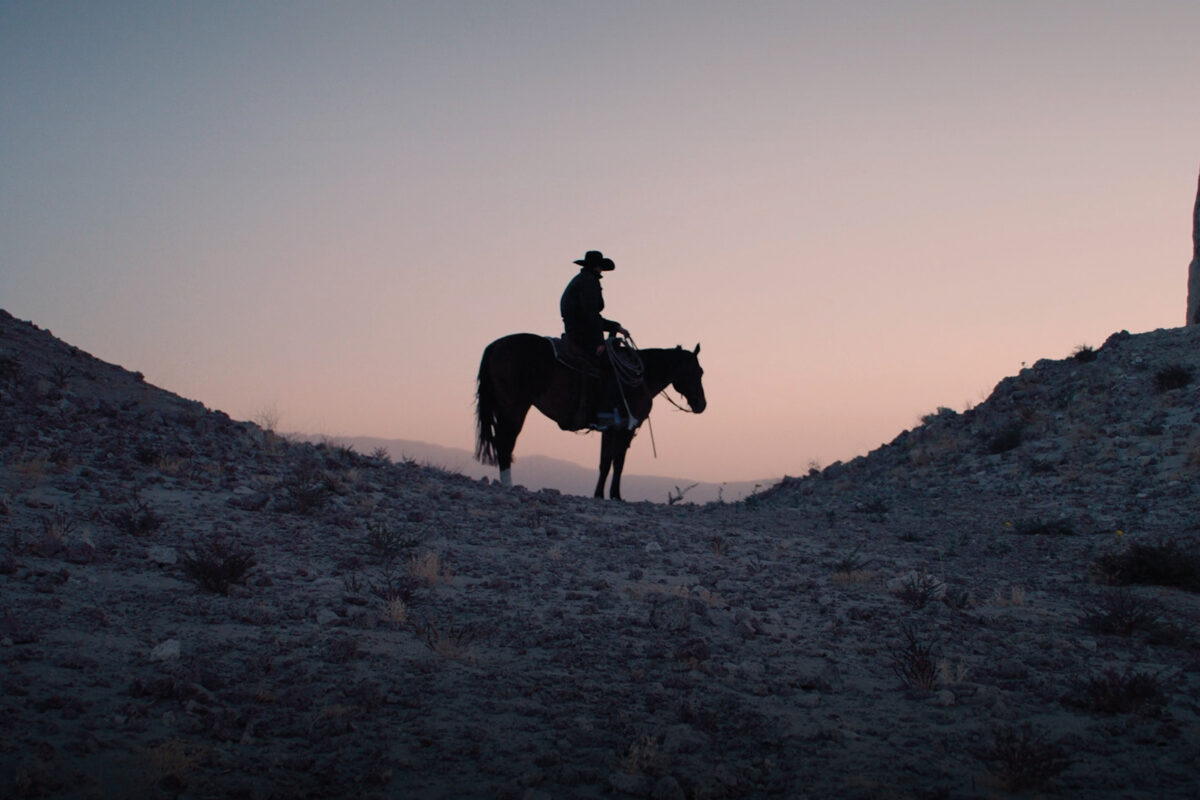Having backed Glossier and Warby Parker, the Forerunner Ventures founder is the visionary VC all the others want to be
Words by JASON SHEELER
Photography by NOLWEN CIFUENTES
The echoes of Kirsten Green’s heels on the metal staircase arrive first. She summits the fourth floor of the downtown San Francisco warehouse (formerly a leather bondage gear workshop, now the headquarters for celebrity designer Ken Fulk’s decorating and event planning business) with a “whew!” Her Chanel bag hits the floor. Unbeknownst to Green, she happens to be standing beneath a 4-foot-tall marble bust of Michelangelo that sits on top of a stainless-steel convection oven and faces a stuffed giraffe across the room. The entire mise-en-scène embodies the current state of San Francisco, a high-wire balancing act of high-performing tech and high-wattage camp, old S.F. and new S.F., liberal radicals and conservative capitalists, and lots of virtual money zipping over Wi-Fi into the cloud. The 47-year-old Ubered over from her Mission Street offices, between investor calls, for a portrait. The views are better here, it seems, and Fulk was happy to share them.
Green, dressed in a swingy, fringy Dior sweater dress when we meet, is a modern-day kingmaker. In under 10 years, she and her firm, Forerunner Ventures, have become the launch pad for a staggering number of successful consumer brands. When two names in her portfolio made news in 2016 (Walmart bought e-tailer Jet.com for $3.3 billion and Unilever acquired subscription service Dollar Shave Club for $1 billion), Green landed on a series of magazine “most” lists (“powerful,” “influential”). But it’s her shepherding of a few fashion startups that have given her the style set’s attention as of late. It may be easy to label blog-turned–makeup brand Glossier, luggage maker Away, and eyewear company Warby Parker as “cult brands” (simply incorrect in Glossier’s case, considering its value was $1.2 billion in March), but whatever you want to call them, they have proven to be not only profitable but paradigm-shifting.
A native of Moraga, Calif., Green has always worked in the retail sector. After graduating from the University of California, Los Angeles, she worked at Deloitte in S.F. as an accountant (covering Gymboree and Sharper Image), then at Montgomery Securities as a retail stock analyst. In 2010, upon meeting the founders of then-startups Birchbox (another subscription service) and Warby Parker, she invested in both and started Forerunner Ventures. “Those brands had a different view of the future,” she says. Green’s understanding of retail dovetailed the week of this interview with a new title to her name: board member of Seattle-based, family-run retailer Nordstrom.
A move toward a brick-and-mortar might seem counterintuitive for such a futurist. “I worked there in college!” she says cheerfully. Then her voice lowers an octave to list the well-reasoned bullet points that outlined her decision. “I tracked them during my career as a retail stock analyst. Nordstrom is very future-minded. In the press, it’s always ‘the death of retail,’ but actually, it’s the renaissance of retail.”
An avowed fashion fan — “If I have a dollar, I’m going to spend it on clothes,” she says —Green explains part of the reason she took the seat was for career development. Green leans in, tucking her wavy brown hair behind one ear and begins to whisper her thoughts on the new ways of networking. When someone juggling so many crystal balls pontificates, pay attention.
“Networking needs to get smaller,” she says. “The people who started social networking have bastardized that system. People are thinking, I came here for the community, but it’s not fulfilling me.” These days, even Green, who, according to rumors, had four deals reach $1 billion this quarter, is looking for new ways to “network.”
She’s a seeker, that’s her job. (She’s also the mother of two children, a son, 9, and a daughter, 5, with her husband, real estate investor Michael Green; they live near the Presidio in San Francisco.) “I am always searching for the root cause of things,” she says. It’s how she communicates, too. From the minute Green sat down, she’s asked as many questions as she’s answered, debating the future of media, social networking, retail and what earrings she should wear for her portrait. (She wanted to wear a pair of Susie Fox hoops but left them at home.)
Each year, 2,500 entrepreneurs pitch Green and her team for one of the eight spots (give or take) she’s allocated for investment. All want to be Emily Weiss, the 34-year-old former Vogue assistant who started beauty blog Into the Gloss in 2010. Or, they at least want the same love, advice and investment Green gave what would become billion-dollar beauty brand Glossier. “There was no Glossier when I invested,” Green says. “But first we had to get down to one thing — 100 percent the one thing was a beauty line.”
The “one thing” comes up a lot when talking to Green. She says she and her team of nine ask themselves and potential businesses: “What’s the wedge?” The answer is a differentiating factor, what they need to get into consumers’ minds, hearts and wallets. “So, it’s about divining desire?” I ask. She answers, “It’s not enough to make something desirable. We are looking for brands that are game changers.”
Weiss says, “When Glossier was just an idea, Kirsten was one of the first people to get excited by the concept of a beauty company that was inspired by and co-created with its customers. She helped us understand that we could build a direct-to-consumer business that … prioritized depth of connection over breadth of selection, giving us the courage to launch Glossier in 2014 with just four inaugural products.”
Green insists, “People are confused about what a brand is today.” Her voice grows louder. “They think it’s a logo or a color palette. That’s not good enough. You have to be engaging with people. Look at all the luggage brands. They talked about luggage. Great. I call that table stakes. Table stakes!” At this point, she is almost yelling. But not in anger. It’s joy, with a football coach’s tenor and a cheerleader’s smile. She compares traditional luggage brand advertising to Away’s approach: tapping into FOMO with Instagram-worthy shots. “Talking about luggage is not the win. The win is, ‘That hotel in Portugal, I want to go there.’ So we put the suitcase there. And the consumer is like, ‘I can’t go to that hotel, but I can buy that dang suitcase.’”
Green sits back in her chair and exhales. She’s aware these are only her points of view and she can only go so far on her own gut. She has to take herself out of the equation. “I don’t want to invest in a bunch of stuff that looks like me.” She believes in diversity on all levels, hiring a team representative of different genders, races, ages, beliefs and hometowns. Despite that, early on everything written about Forerunner was tagged and heralded as “female” — “female-led,” “female first,” “the largest female-run” — and the modifiers make Green visibly uncomfortable.
“I never thought about myself as a ‘female this’ and ‘female that.’ Until recently,” Green says. She explains she doesn’t like to “genderize” too much. “I had a lot of complex feelings about it. What is the opposite of embracing it? I shunned it. I’m into it now. Everything was very white male–dominated. And now we are talking about, ‘I am woman, hear me roar.’ Because you’ve got to do that to get people’s attention. To try and drive enough opportunity to get women and diversity into the mainstream.”
She sees the upsides now — the lifting of all boats with her rising tide. “But I worry we verbalize it more than we demonstrate it right now. So, let’s elevate the impact and contributions and success of people who have not been at the table. Now I’m game to take this on.” She quickly adds: “For the movement.”
This story originally appeared in the May 2019 issue of C magazine.




